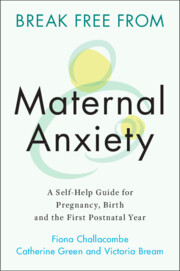69 results
47 Cross-ancestry GWAS meta-analysis of keloids discovers novel susceptibility loci in diverse populations
- Part of
-
- Journal:
- Journal of Clinical and Translational Science / Volume 8 / Issue s1 / April 2024
- Published online by Cambridge University Press:
- 03 April 2024, p. 13
-
- Article
-
- You have access
- Open access
- Export citation
Cognitive therapy for PTSD following birth trauma and baby loss: clinical considerations
-
- Journal:
- The Cognitive Behaviour Therapist / Volume 16 / 2023
- Published online by Cambridge University Press:
- 13 September 2023, e23
-
- Article
-
- You have access
- Open access
- HTML
- Export citation
16 Cross-ancestry analysis of preeclampsia identifies novel maternal susceptibility loci
- Part of
-
- Journal:
- Journal of Clinical and Translational Science / Volume 7 / Issue s1 / April 2023
- Published online by Cambridge University Press:
- 24 April 2023, pp. 4-5
-
- Article
-
- You have access
- Open access
- Export citation
Contents
-
- Book:
- Break Free from Maternal Anxiety
- Published online:
- 13 October 2022
- Print publication:
- 13 October 2022, pp ix-ix
-
- Chapter
- Export citation
Appendix 1: Anxiety-informed Birth Planning
- from Appendices
-
- Book:
- Break Free from Maternal Anxiety
- Published online:
- 13 October 2022
- Print publication:
- 13 October 2022, pp 323-324
-
- Chapter
- Export citation
Appendices
-
- Book:
- Break Free from Maternal Anxiety
- Published online:
- 13 October 2022
- Print publication:
- 13 October 2022, pp 323-328
-
- Chapter
- Export citation
4 - Specific Phobias Affecting Pregnancy and the Postnatal Period
-
- Book:
- Break Free from Maternal Anxiety
- Published online:
- 13 October 2022
- Print publication:
- 13 October 2022, pp 92-115
-
- Chapter
- Export citation
Appendix 2: Improving Your Sleep
- from Appendices
-
- Book:
- Break Free from Maternal Anxiety
- Published online:
- 13 October 2022
- Print publication:
- 13 October 2022, pp 324-326
-
- Chapter
- Export citation
8 - Anxiety About Pregnancy and Birth
-
- Book:
- Break Free from Maternal Anxiety
- Published online:
- 13 October 2022
- Print publication:
- 13 October 2022, pp 256-302
-
- Chapter
- Export citation
Index
-
- Book:
- Break Free from Maternal Anxiety
- Published online:
- 13 October 2022
- Print publication:
- 13 October 2022, pp 335-344
-
- Chapter
- Export citation
9 - Anxiety and Adjusting to Motherhood
-
- Book:
- Break Free from Maternal Anxiety
- Published online:
- 13 October 2022
- Print publication:
- 13 October 2022, pp 303-317
-
- Chapter
- Export citation
Acknowledgements
-
- Book:
- Break Free from Maternal Anxiety
- Published online:
- 13 October 2022
- Print publication:
- 13 October 2022, pp xiv-xiv
-
- Chapter
- Export citation
References and Resources
-
- Book:
- Break Free from Maternal Anxiety
- Published online:
- 13 October 2022
- Print publication:
- 13 October 2022, pp 329-331
-
- Chapter
- Export citation
Dedication
-
- Book:
- Break Free from Maternal Anxiety
- Published online:
- 13 October 2022
- Print publication:
- 13 October 2022, pp vii-viii
-
- Chapter
- Export citation
How to Use This Book
-
- Book:
- Break Free from Maternal Anxiety
- Published online:
- 13 October 2022
- Print publication:
- 13 October 2022, pp xi-xiii
-
- Chapter
- Export citation
5 - Panic Attacks and Health Worries
-
- Book:
- Break Free from Maternal Anxiety
- Published online:
- 13 October 2022
- Print publication:
- 13 October 2022, pp 116-147
-
- Chapter
- Export citation
Reviews
-
- Book:
- Break Free from Maternal Anxiety
- Published online:
- 13 October 2022
- Print publication:
- 13 October 2022, pp i-ii
-
- Chapter
- Export citation
7 - Coping with Traumatic Experiences While Pregnant and After Birth
-
- Book:
- Break Free from Maternal Anxiety
- Published online:
- 13 October 2022
- Print publication:
- 13 October 2022, pp 178-255
-
- Chapter
- Export citation
1 - Introduction
-
- Book:
- Break Free from Maternal Anxiety
- Published online:
- 13 October 2022
- Print publication:
- 13 October 2022, pp 1-16
-
- Chapter
-
- You have access
- HTML
- Export citation

Break Free from Maternal Anxiety
- A Self-Help Guide for Pregnancy, Birth and the First Postnatal Year
-
- Published online:
- 13 October 2022
- Print publication:
- 13 October 2022



